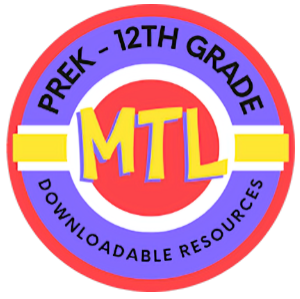Showing 121–138 of 138 resultsSorted by latest
-
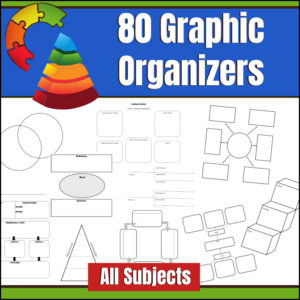 $8.50Buy Now
$8.50Buy NowA graphic organizer, also known as knowledge map, concept map, story map, cognitive organizer, advance organizer, or concept diagram, is a communication tool that uses visual symbols to express knowledge, concepts, thoughts, or ideas, and the relationships between them. This resource gives you 80 different graphic organizers and can be used across the curriculum!
Here is a comment from a customer…
Karen E. said: “OK, at first I thought “Really? I’m going to pay for graphic organizers that I can probably find for free with some searching, etc?” Well, now I am so glad that I did. So good to have organizers available quickly BUT also several of them have variations which is helpful for “seeing” how to use them in my content area. Good value.“ -
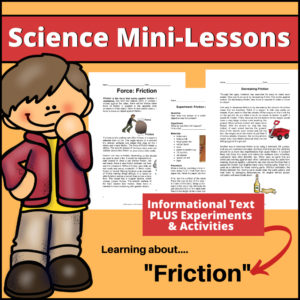 $2.00Buy Now
$2.00Buy NowStudying ‘Forces & Magnets‘ in your classroom? This Mini-Lessons resource has been designed to help students gain a greater understanding as well as to help them retain the information they are learning!
-
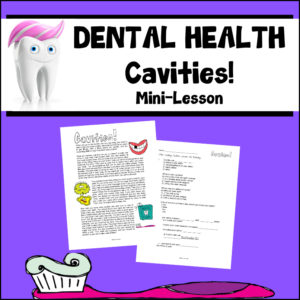 $1.50Buy Now
$1.50Buy NowThis informational text is a perfect short lesson to use anytime for a Health class or perhaps a Reading or Science class during the month of February which in Dental Health Month! Students will learn what cavities are, that microorganisms (called plaque) produce acid and the acid breaks down the enamel! They will also learn about tarter, what not to eat and how to care for their teeth.
Includes:
- 1 page of informational text (I’ve included both a color and b/w version)
- 1 page assessment (multiple choice and fill-in-the-blanks)
- Answer Key
-
 $7.00Buy Now
$7.00Buy NowHelp your students become self-learners as the plan, research, organize and most of all…LEARN as they create their own Volcano notebook project. This cross-curricular resource has been designed to inspire and guide students through the learning and reporting process as they learn how volcanoes are formed, prediction of eruptions, types of volcanoes, where they are located and more.
-
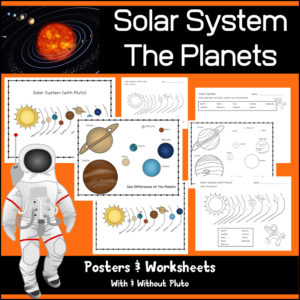 $3.00Buy Now
$3.00Buy NowThis Solar System product will help students learn and reinforce their knowledge of the order of the planets and to be able to visual size differences of the planets! Each color poster has a duplicate b/w poster that can be used as a student handout. There are also worksheets for students to complete (with and without word banks). This resource provides 2 sets of all resources – One which includes the dwarf planet of Pluto and one that does not.
-
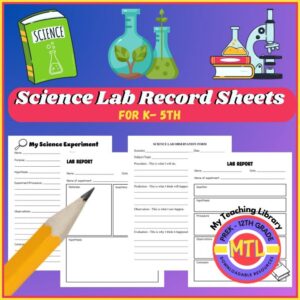 $3.00Buy Now
$3.00Buy NowThese science experiment lab record worksheets will give your elementary students the opportunity to organize their thoughts, activities, observations and conclusions for any experiment they may perform.
There are 3 different worksheets from which to choose:
#1: “Science Labe Observation Form” – 1 page
– Students will name themselves as the ‘scientist’ and will be given sections to name the subject/topic, give details for the procedure (what they will do), their prediction (what they think will happen, their observations (what they saw) and an evaluation (why they think the result happened and what was learned).#2: “Lab Report” – 2 pages
– First page (completed prior to the experiment): Students will name the experiment, list materials, questions they have and their hypothesis.
– Second page (completed after the experiment): Students will name the specific question they are testing, restate their hypothesis, detail the procedure and observations and then write their conclusions.#3: “My Science Experiment” – 1 page
– Students will state the purpose of the experiment, their hypothesis, detail the procedure, give their observations and write their conclusions. -
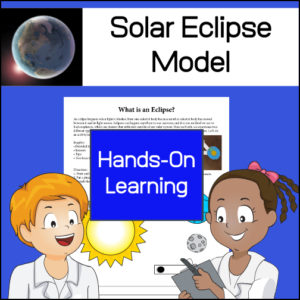 $1.50Buy Now
$1.50Buy NowHands-on learning! This solar eclipse activity has been designed to help students visualize a solar eclipse by creating a simple paper model of one.
-
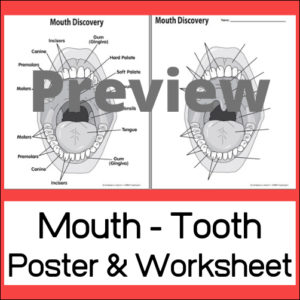 $1.50Buy Now
$1.50Buy NowHelp students learn the parts of the mouth and the types of teeth with this labeled poster and worksheet!
-
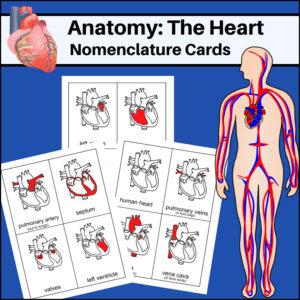 $2.00Buy NowThis resource,The Heart – Human Anatomy Nomenclature Cards, help students learn and study the location of the parts of the heart: pulmonary veins, aorta, vena cava, pulmonary artery, septum, valves, left ventricle, left atrium, right ventricle and right atrium.
$2.00Buy NowThis resource,The Heart – Human Anatomy Nomenclature Cards, help students learn and study the location of the parts of the heart: pulmonary veins, aorta, vena cava, pulmonary artery, septum, valves, left ventricle, left atrium, right ventricle and right atrium. -
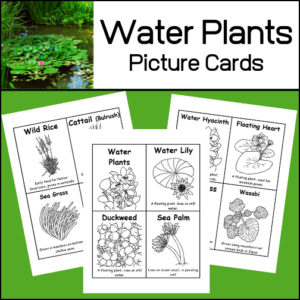 $1.00Buy Now
$1.00Buy Now10 plants that grow in water – picture cards. Each card includes the type of plant, a short description and a picture to color.
Plants included are:
– water lily
– duckweed
– sea palm
– water hyacinth
– floating heart
– watercress
– wasabi
– wild rice
– cattail (bulrush)
– sea grass -
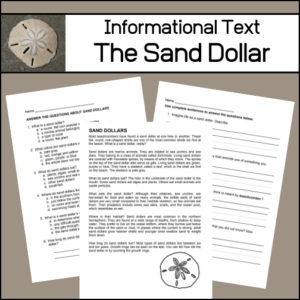 $1.50Buy Now
$1.50Buy NowThis informational article will teach students about the sand dollar. They will learn that the little round, coin-shaped shell found on the beach is actually part of a marine animal, related to sea urchins and sea stars. They will also learn how living sand dollars move, that they aren’t ‘white’, how and what they eat and much more. After reading, students will complete two worksheets (multiple choice and short answer) to assess their comprehension / understanding of the material. Answer Key is provided.
Automated Readability Index: 4.8
Grade level: 8-9 yrs. old (Fourth and Fifth graders)
Linsear Write Formula : 5.6
Grade level: Sixth Grade. -
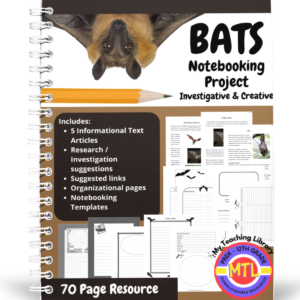 $8.00Buy Now
$8.00Buy NowStudying bats? Here is a resource that will allow students to create a beautiful project that will show off what they’ve learned. This 70 page project unit can be used as a fully contained project resource (with no needed outside information required) or can be a launch for a full-blown research project using additional resources and includes:
- – Explanation page about creating a notebooking project
- – Suggested supply list
- – Evaluation rubric
- – Assignment page
- – Table of contents pages
- – Vocabulary & Reference pages
- – List of bat related vocabulary
- – Suggested links (optional)
- – Research / Notebooking questions/investigation suggestion handouts
- – 5 Informational text articles
- – Project KWL
- – Notebooking template pages
- – Bat pictures
-
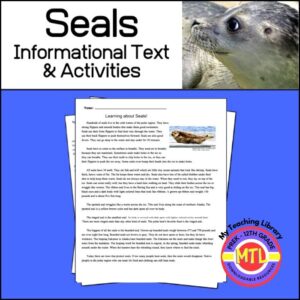 $2.00Buy Now
$2.00Buy NowThis informational text article is all about seals, where they live, their physical characteristics and about several different types of this cold-water mammal. After reading, students will complete a reading comprehension worksheet and (optional) write a story! Answer key provided.
-
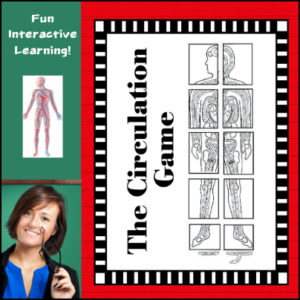 $4.50Buy Now
$4.50Buy NowA fun, interactive game that will have students learn all about the circulatory system!
- – deliver oxygen and food to the cells
- – have oxygen and carbon dioxide ‘ride’ on red blood cells
- – circulate red blood cells throughout the body – through the circulatory system (arteries and veins)
The first team to get all their oxygen to the cells, all the food to the cells, all the wastes to the kidneys and all the carbon dioxides to the lungs, wins the game!
-
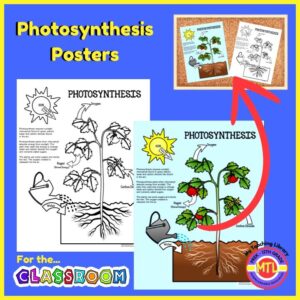 $2.25Buy Now
$2.25Buy NowThis resource gives you two photosynthesis posters, one b/w and the other color. Each poster has an easy-to-understand illustration plus a short explanation of the photosynthesis process is also included!
-
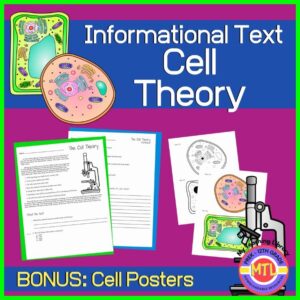 $2.50Buy Now
$2.50Buy NowA great introductory lesson on Cell Theory for your Science students. The text will teach students about the contributions of scientists Robert Hooke, Matthias Schleiden, Theodor Schwann and Rudolf Virchow. It lists the 3 basics of Cell Theory as well as the 3 ‘modern’ ideas that have been added to Cell Theory.
This resource includes:
- Informational Text
- Assessment of student understanding (multiple choice and short essay)
- Answer Key
- BONUS: B/W and Color posters of animal and plant cells.
-
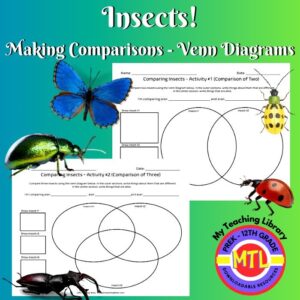 $2.25Buy Now
$2.25Buy NowTWO ready to use Venn Diagram Science activities for students to use to compare 2 or 3 insects. On each, students will list the insects they will compare and contrast, draw a picture of each and then complete the Venn Diagram.
Extend the activity by asking students to write a paragraph or short report about their discoveries!
-
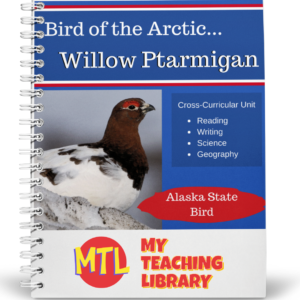 $3.25Buy Now
$3.25Buy NowBird of the Arctic – Willow Ptarmigan is a cross-curricular resource (Reading, Writing, Science and Geography) that you can use as a stand alone product or as a supplement to related thematic and/or unit studies. Great to use if you are studying: Habitats, Arctic animals, Alaska, Birds, State birds, Ornithology
